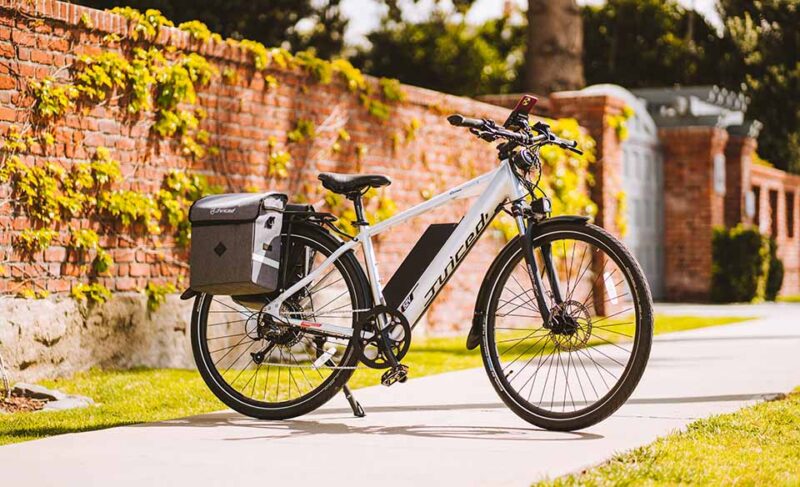
I’ve been a part of the CleanTechnica family, off-and-on for the better part of fifteen years, and one of my favorite parts of the gig has been meeting some really smart, engaging people in every part of the battle for a better tomorrow (We should trademark that —Ed.). A lot of the smartest, engaging-est people I’ve met have come from our relationship with the Rocky Mountain Institute, an independent, non-partisan, nonprofit organization of experts across disciplines that are working to accelerate the clean energy transition and improve lives — and when I found out that one of them has clocked more than 11,500 miles (!?) on their 2018 Juiced E-bike, I had to know more.
Juiced Bikes CrossCurrent | Commuter E-Bike

Image courtesy Juiced Bikes.
Bryn Grunwald is a carbon-free associate at RMI, and has helped me put together a few articles over the last year or two that were definitely made better by RMI’s involvement. Along with her partner, she’s put more than 11,500 miles on her Juiced CrossCurrent, and began to wonder how much she’s saved taking her e-bike on errands instead of her car.
Like any good analyst, Bryn started by figuring out her costs. “My bike has a battery capacity of 624Wh and I assumed an average range of 35 miles, giving me roughly 0.0178kWh/mile,” she wrote. “I assumed an average electricity cost of 15 cents. This means that in the last few years, I’ve spent roughly $30.75 on charging my bike. I also bought a new battery for $600, and various upgrades and maintenance features adds up to about ~$500 across that time period (two trips to the shop, replacement tires, new handlebar mirror and a new rack after a thief took mine off, new bike lock and brake pad replacements), since I can do most maintenance things like changing my tires myself. So let’s say I’ve spent $1,130 on my bike across the last five years, or roughly $226 (per) year.”
That math doesn’t seem to include the cost of the Juiced e-bike, but that’s consistent through the next steps (as you’ll see).
“The car I use is a 2010 Toyota Camry,” she continues, “with an average of 26mpg. This means to drive that 11,500 miles I’ve biked in five years, I would have needed to buy ~442 gallons of gas. I looked up Colorado’s gas prices today (since I bike most places, I rarely know what gas costs since I buy gas maybe once a month), and assumed an average of $3.96 per gallon. Across the last five years, it would have cost me $1,751.10 for just the gas to drive the miles I’ve biked, or $621 more than what I paid for my bike’s fuel and maintenance. This is not including the maintenance costs for the car (Emphasis mine —Ed.), which the Department of Energy estimates at $0.10/mile. That would add an additional $1,161.5 to my car costs for that five-year period, or $1,782 more than I paid for my e-bike during that time.”
More significant, possibly, than the direct savings of choosing the bike over the car for short trips is the added health benefits of riding— plus the carbon savings of not having to own a second car. Bryn gets it.
“Because we don’t have a second car, there is a great deal of money we’re saving on insurance, registration, and reduced vehicle depreciation,” she writes. “Plus, I get to get in a bit of cardio every day, and I feel very connected to my city. I have mental maps of how to bike everywhere I want to go, and I get to see things I might miss from the car.”
My experience of micromobility has been similar, even if I’m a few thousand miles short of Bryn’s mileage tally. Still, I can’t imagine Bryn’s experience is all that unique— but what do you guys think? Scroll on down to the comments and let us know!
I don’t like paywalls. You don’t like paywalls. Who likes paywalls? Here at CleanTechnica, we implemented a limited paywall for a while, but it always felt wrong — and it was always tough to decide what we should put behind there. In theory, your most exclusive and best content goes behind a paywall. But then fewer people read it! We just don’t like paywalls, and so we’ve decided to ditch ours. Unfortunately, the media business is still a tough, cut-throat business with tiny margins. It’s a never-ending Olympic challenge to stay above water or even perhaps — gasp — grow. So …




